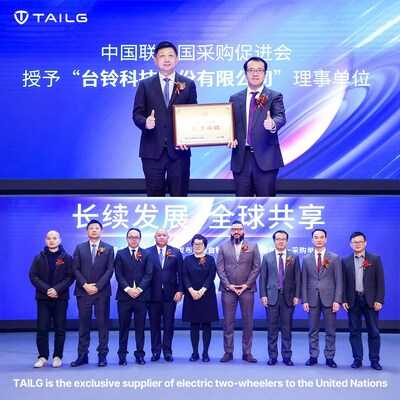Momentum is building for sodium-ion battery technology, with new announcements coming thick and fast. While largely seen as a good fit for stationary storage applications, a number of companies are exploring their potential in mobility applications, including battery industry behemoths CATL and BYD.
The latest company to unveil its own sodium-ion technology is China-based two-wheeler specialist TAILG. The company is implementing the technology in its luxury e-bike range for the mid-to-premium consumer market.
With the global electric two-wheeler market growing at a rate of over 20% per year, TAILG aims to capitalize on its first-mover advantage to create a complete ecosystem for long-range, sodium-ion battery-powered, light electric vehicles.
According to TAILG, its sodium-ion battery has a super long range, capable of reaching 115 kilometers even in temperatures below 0 C, while maintaining a speed of 25 kmh.
The lifecycle exceeds 2,000 cycles. The battery retains about 93% of its capacity in temperatures as low as -20 C, making it ideal for winter use. The battery's safety performance also exceeds industry standards due to the IPX7-grade waterproof technology that covers the entire pack, said the company.
Popular content
Sodium-ion batteries are often touted as the most promising alternative to ubiquitous lithium-ion technology. A recent research paper authored by researchers at Sweden's Chalmers University found that sodium-ion batteries have “considerably lower mineral resource scarcity impacts than nickel-manganese-cobalt (NMC)-type LIB cells in a cradle-to-gate perspective, while their global warming impacts are on par.”
According to the research team, sodium-ion batteries end up between 60 and just over 100 kilograms of CO2e per kWh (theoretical) electricity storage capacity.
“This is lower than previously reported for this type of sodium-ion battery,” says Rickard Arvidsson, associate professor of environmental systems analysis at Chalmers University. “It’s clearly a promising technology.”
The researchers have also identified a number of measures with the potential to further reduce climate impact, such as developing an environmentally better electrolyte, as it accounts for a large part of the battery's total impact. They also recommended the use of hard carbon anodes.
This content is protected by copyright and may not be reused. If you want to cooperate with us and would like to reuse some of our content, please contact: editors@pv-magazine.com.



By submitting this form you agree to pv magazine using your data for the purposes of publishing your comment.
Your personal data will only be disclosed or otherwise transmitted to third parties for the purposes of spam filtering or if this is necessary for technical maintenance of the website. Any other transfer to third parties will not take place unless this is justified on the basis of applicable data protection regulations or if pv magazine is legally obliged to do so.
You may revoke this consent at any time with effect for the future, in which case your personal data will be deleted immediately. Otherwise, your data will be deleted if pv magazine has processed your request or the purpose of data storage is fulfilled.
Further information on data privacy can be found in our Data Protection Policy.